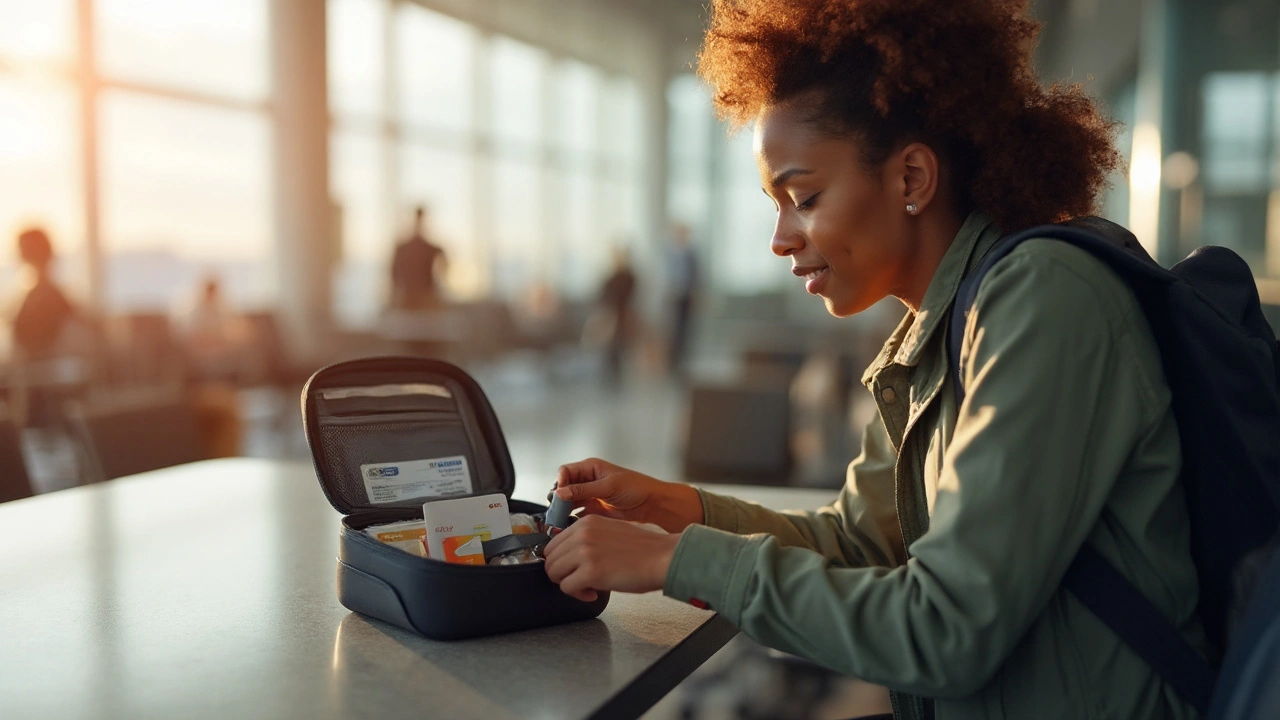Inhaler Travel Tips – Fly With Confidence and Stay Breath‑Easy
If you rely on an inhaler, the thought of boarding a plane can feel stressful. The good news? You can travel with a inhaler without hassle. Below are simple steps that keep your medication handy, meet airline rules, and help you breathe comfortably at 30,000 feet.
Pack Smart, Pack Right
First, put your inhaler in your carry‑on, not checked baggage. Cabin pressure changes can affect medication, and you’ll need it when you’re seated. Keep the device in a clear plastic pouch so security can see it without opening the bag. A copy of your prescription or a doctor’s note adds extra peace of mind, especially for controlled meds.
If you have a spacer or a rescue inhaler, bring a spare. A broken or empty inhaler mid‑flight is a nightmare you can avoid with a backup. Label each device with your name and dosage – it speeds up the security check and avoids mix‑ups.
Know the Airline’s Rules
Most airlines treat inhalers as medical devices, but policies differ. Some require a printed doctor’s note, others allow you to declare it at the gate. A quick look at the carrier’s website before you book saves surprises. If you’re flying internationally, check the destination country’s rules on bringing medication across borders.
When you board, let the flight attendant know you have a rescue inhaler. They can help you store it under the seat or in the overhead bin where you can reach it quickly. Some crew members even keep a spare inhaler for emergencies if you’re short‑handed.
Stay Hydrated and Manage Cabin Air
Dry cabin air can tighten airways, making you feel short of breath even if your asthma is well‑controlled. Drink water regularly – aim for a sip every 20 minutes. Avoid alcohol and caffeine, which can dehydrate you further.
Use a nasal saline spray before the flight to keep nasal passages moist. This reduces irritation that can trigger wheezing. If you have a portable humidifier approved for air travel, keep it handy for longer trips.
Use Your Inhaler Correctly at 30,000 Feet
When you need your rescue inhaler, sit upright, remove the cap, and inhale slowly while pressing the canister. Wait about ten seconds between puffs if a double dose is prescribed. Keep the inhaler upright to ensure the medication reaches the lungs, not the mouth.
If you have a spacer, attach it before the flight and practice using it at home. In the cabin, a spacer helps you get the full dose even if the air pressure is low. Remember to exhale fully before each puff – this maximizes the medication’s effect.
Plan for Unexpected Symptoms
Even with perfect prep, you might feel a bout of bronchospasm mid‑flight. If that happens, use your rescue inhaler immediately, then alert a flight attendant. They can raise the cabin pressure a little or offer an extra blanket to keep you warm, both of which help the lungs relax.
Carry a small notebook with emergency contact numbers, your doctor’s phone, and a brief note on your asthma triggers. In case you need medical assistance on the ground, having that info ready speeds up care.
Traveling with an inhaler doesn’t have to be a worry. By packing smart, checking airline policies, staying hydrated, and using your device correctly, you’ll arrive at your destination breathing easy and ready for the adventure ahead.
Traveling with Budesonide Formoterol: Essential Tips & Tricks
Learn how to safely travel with Budesonide Formoterol. Get packing advice, storage tips, paperwork tricks, and emergency plans for asthma or COPD trips.
